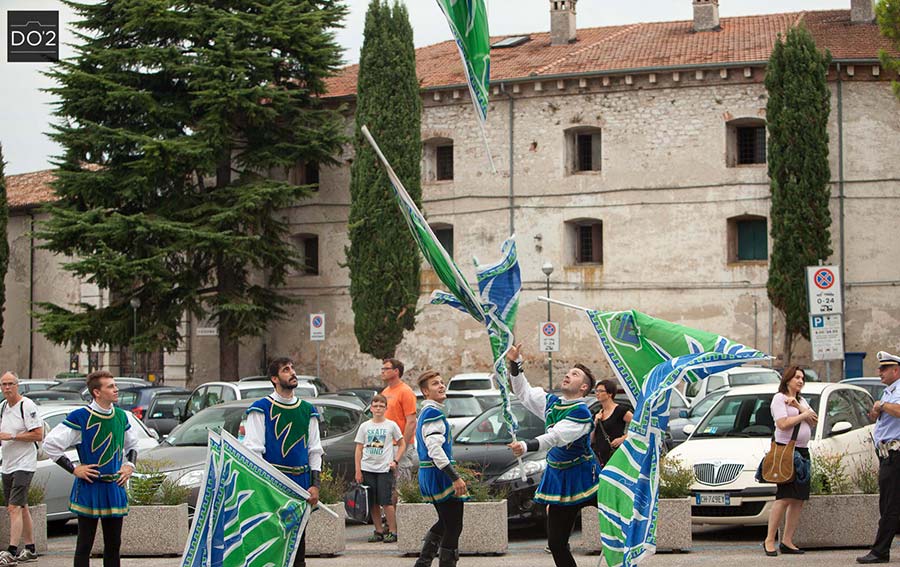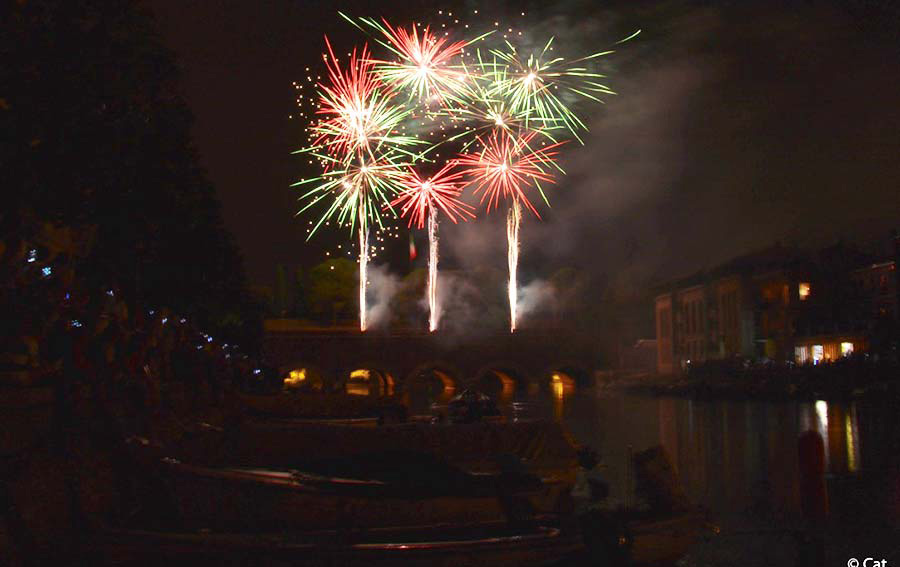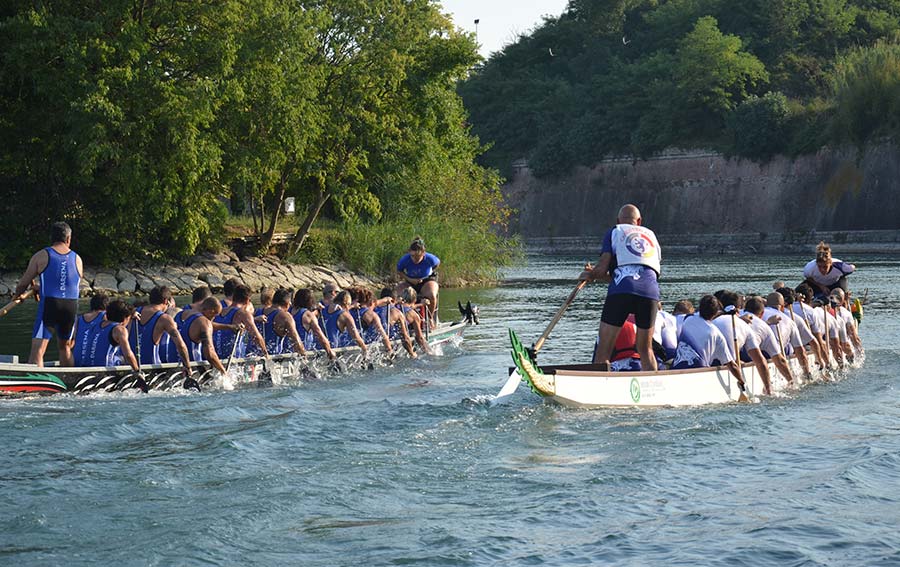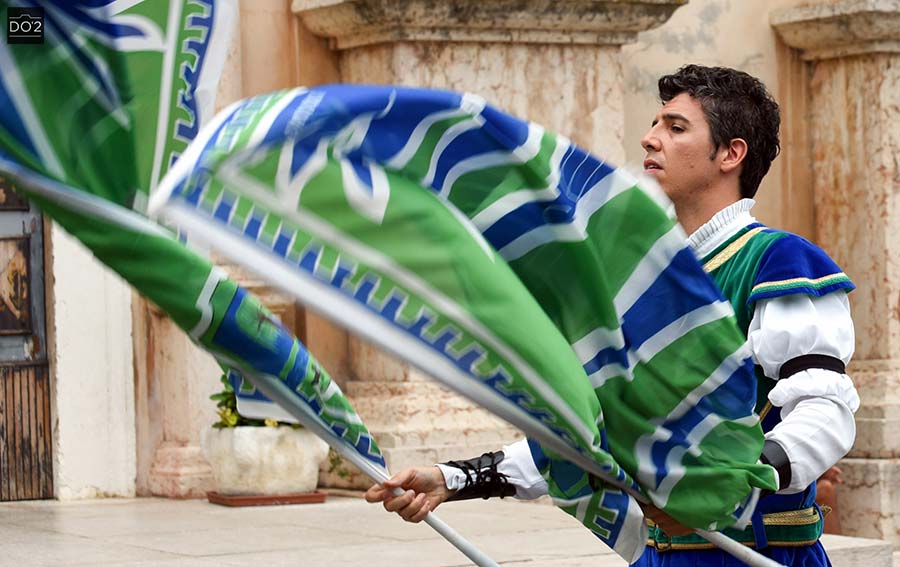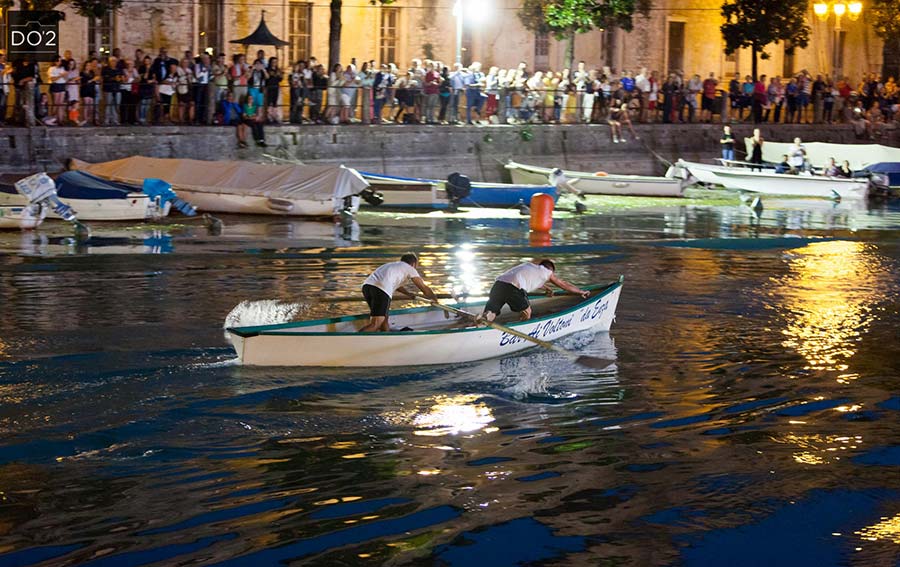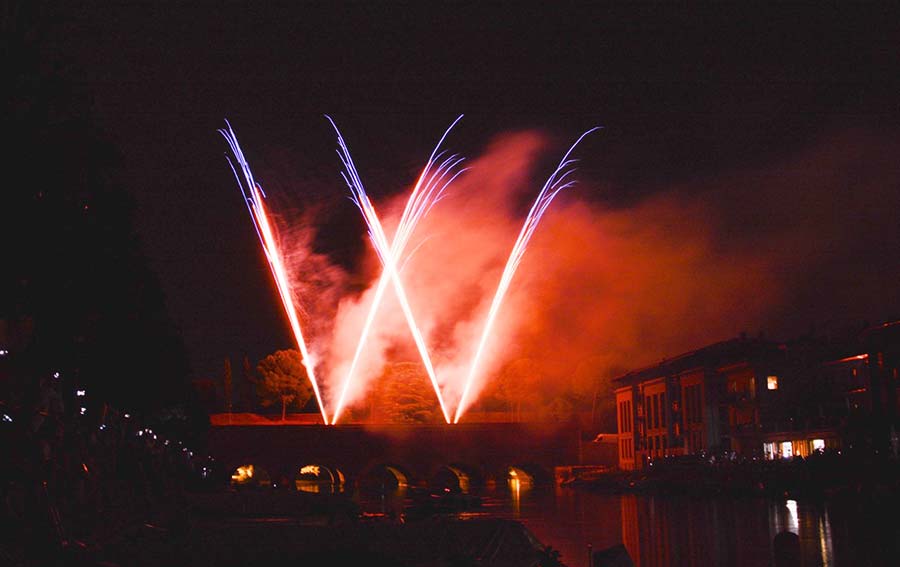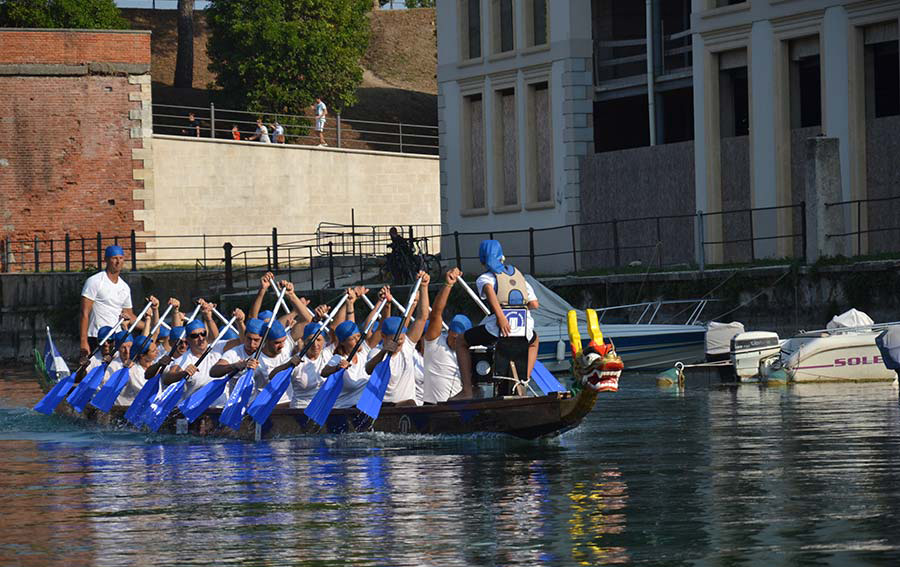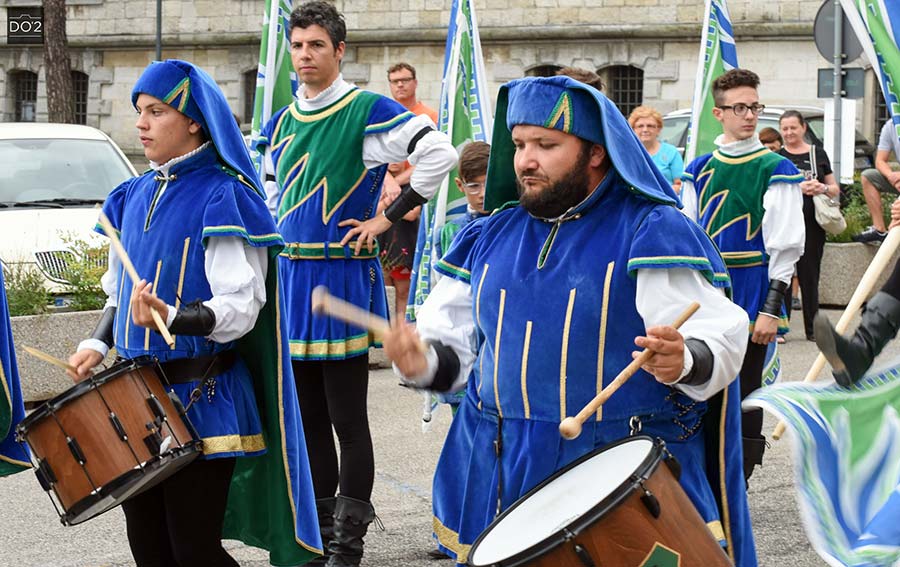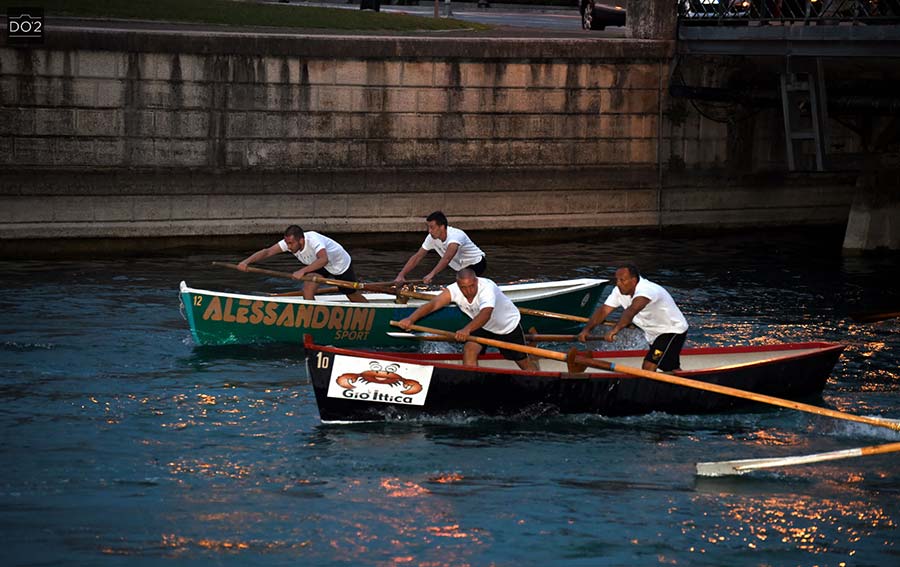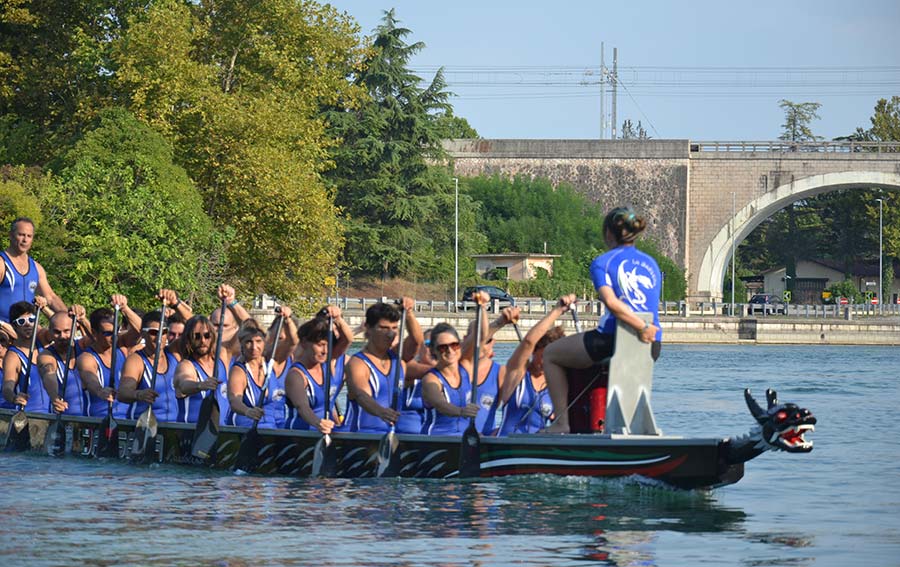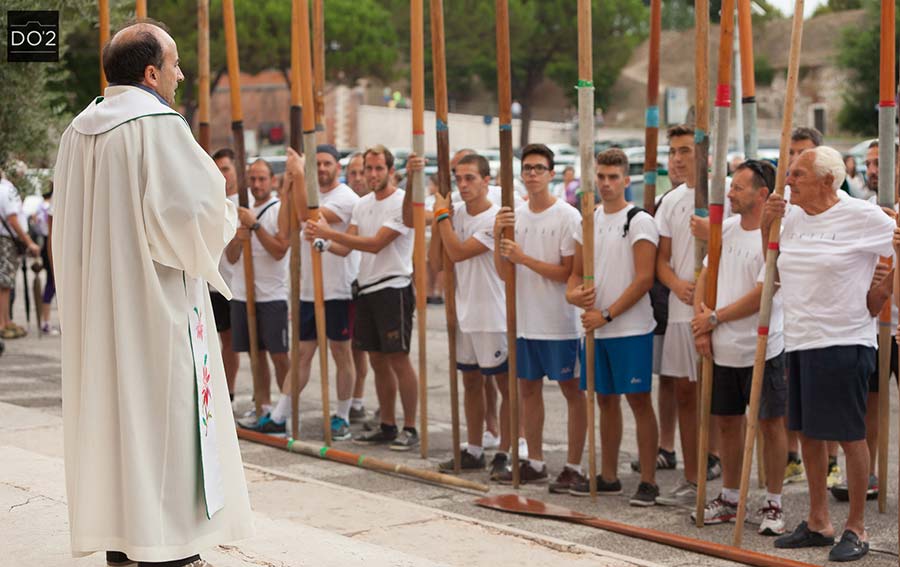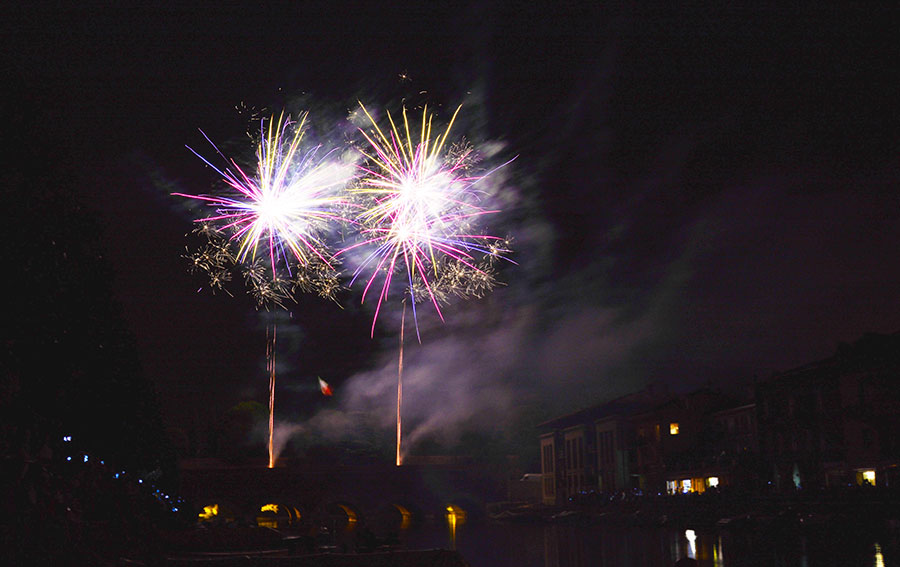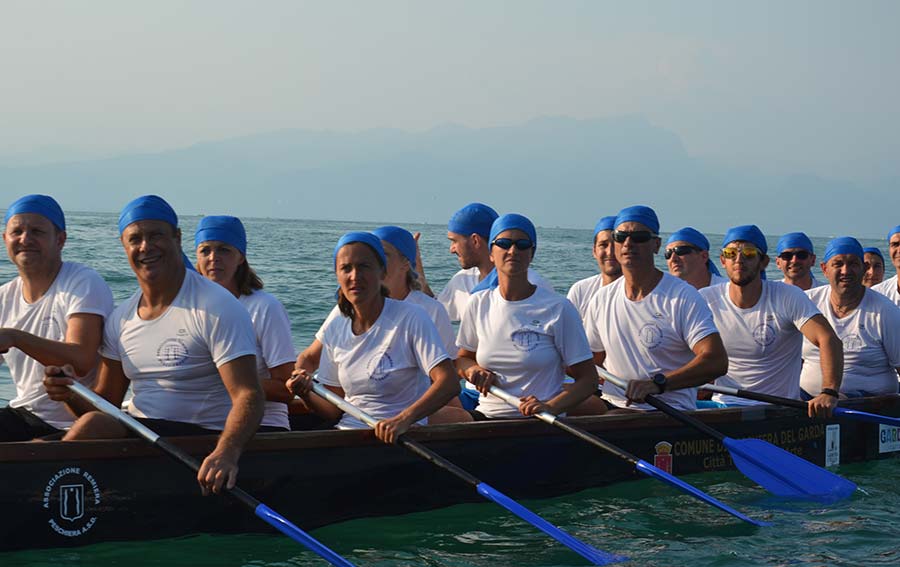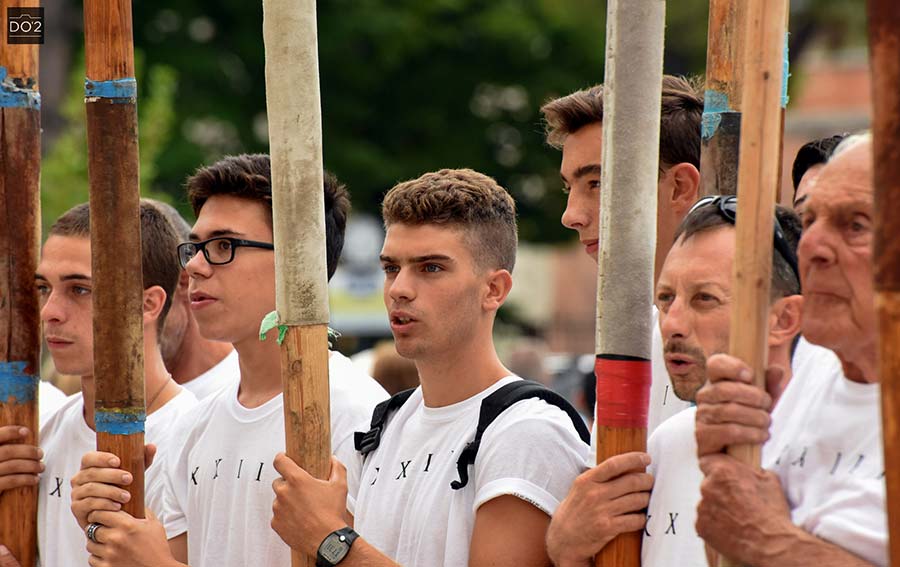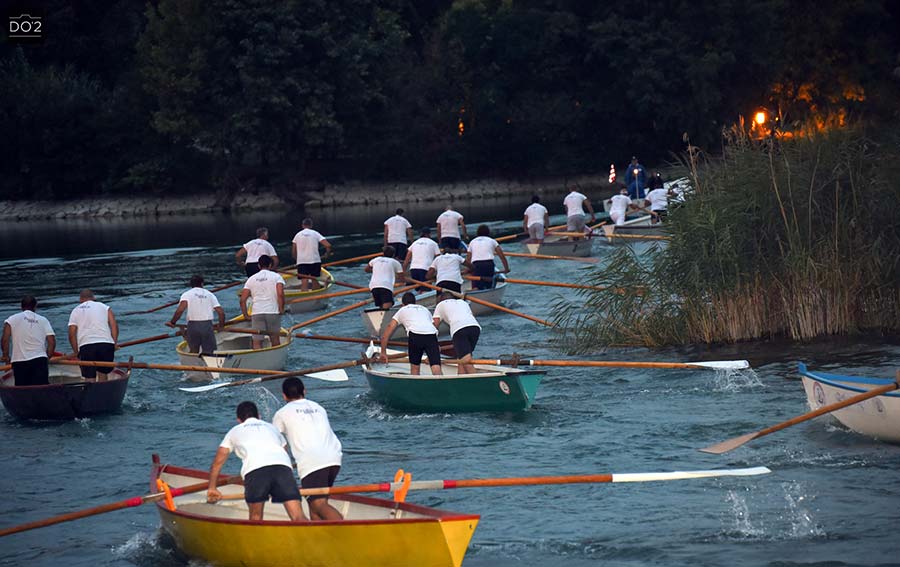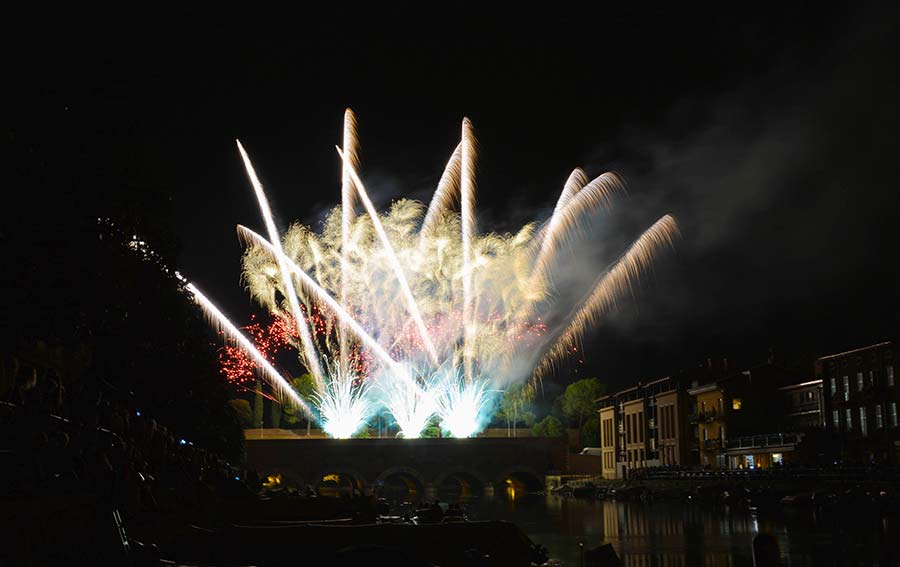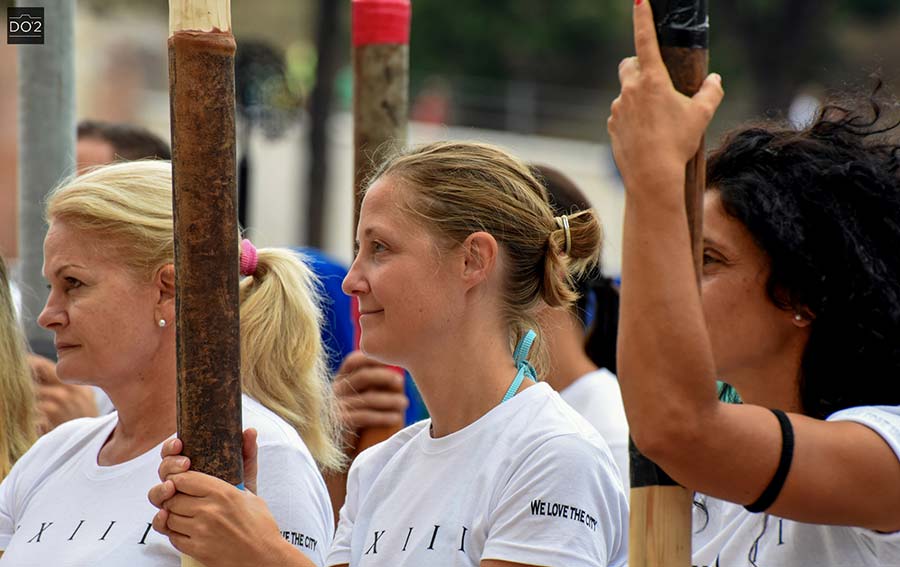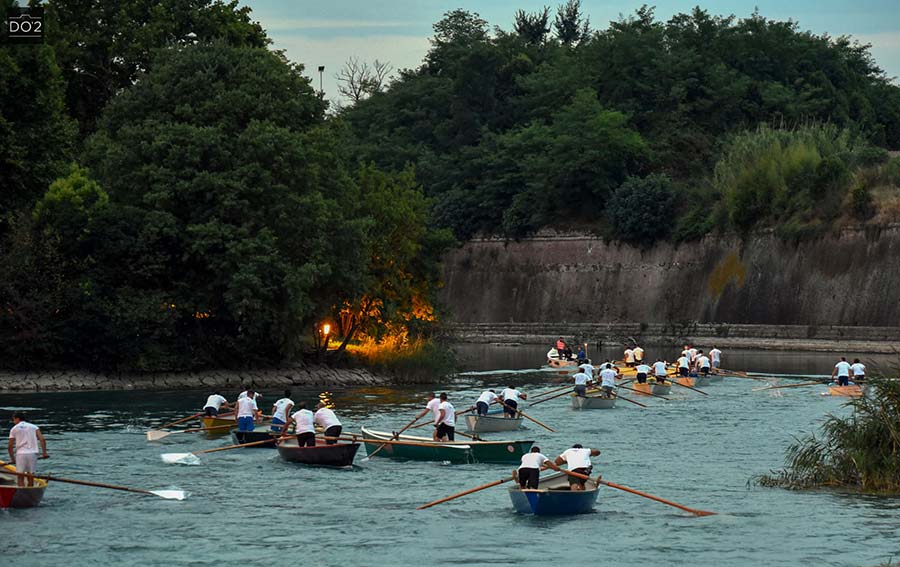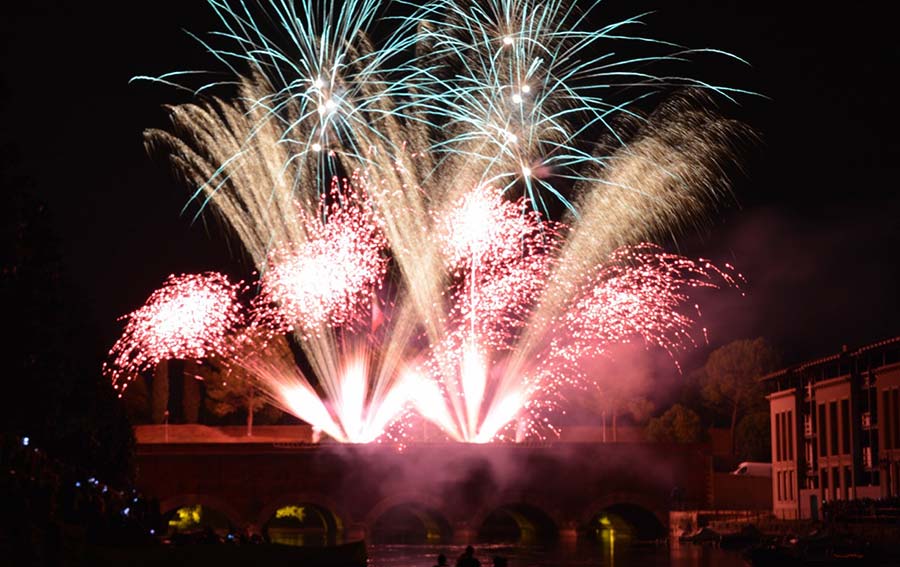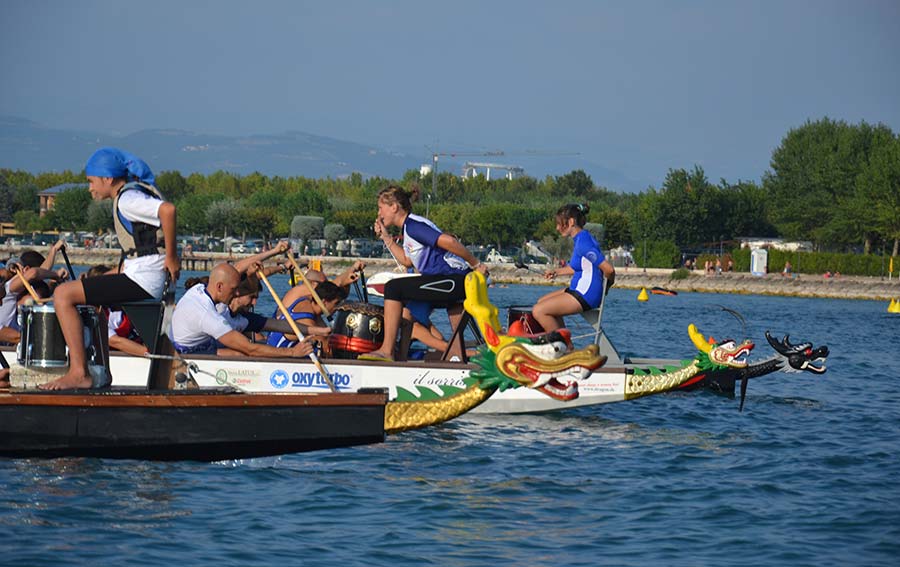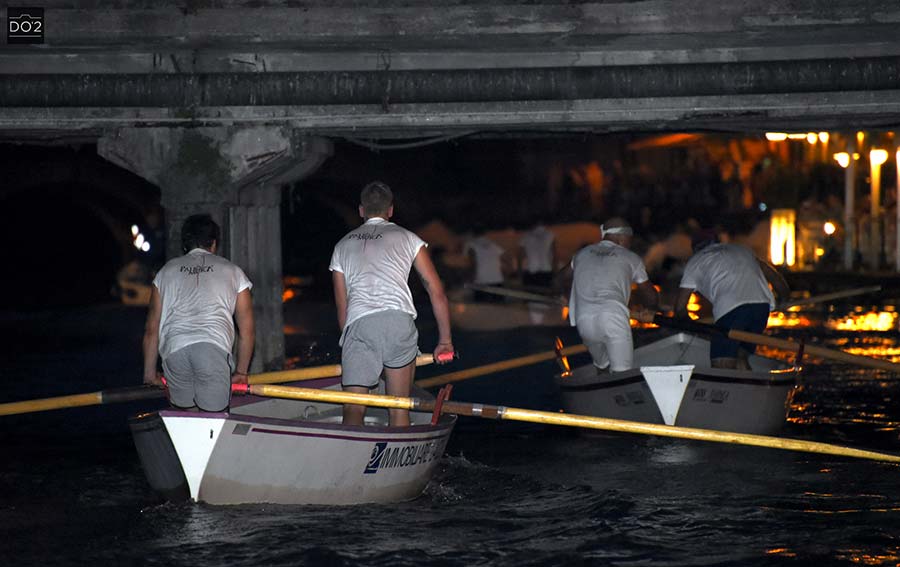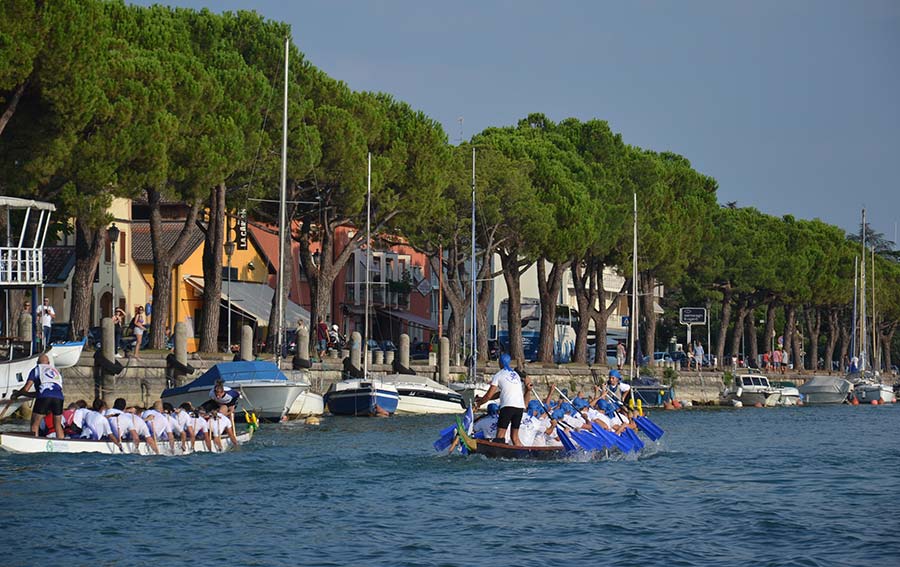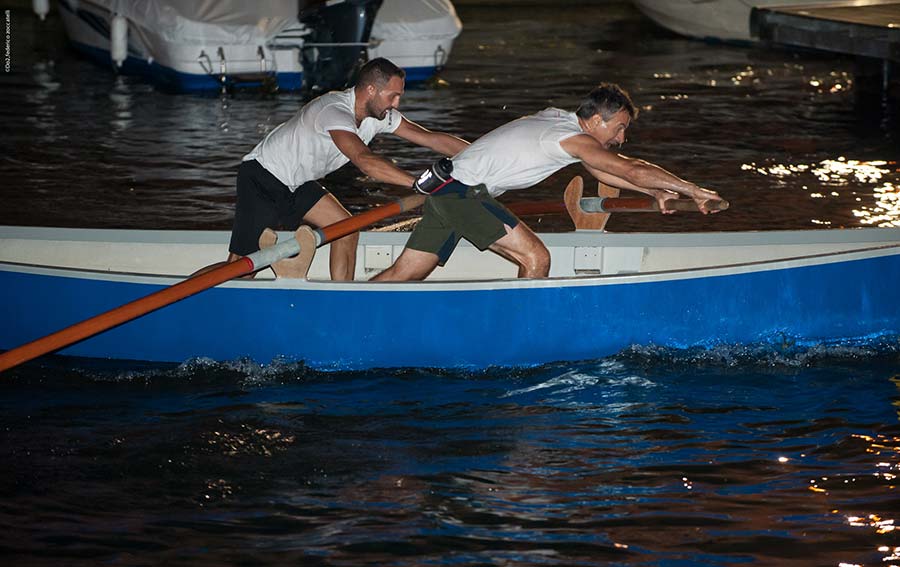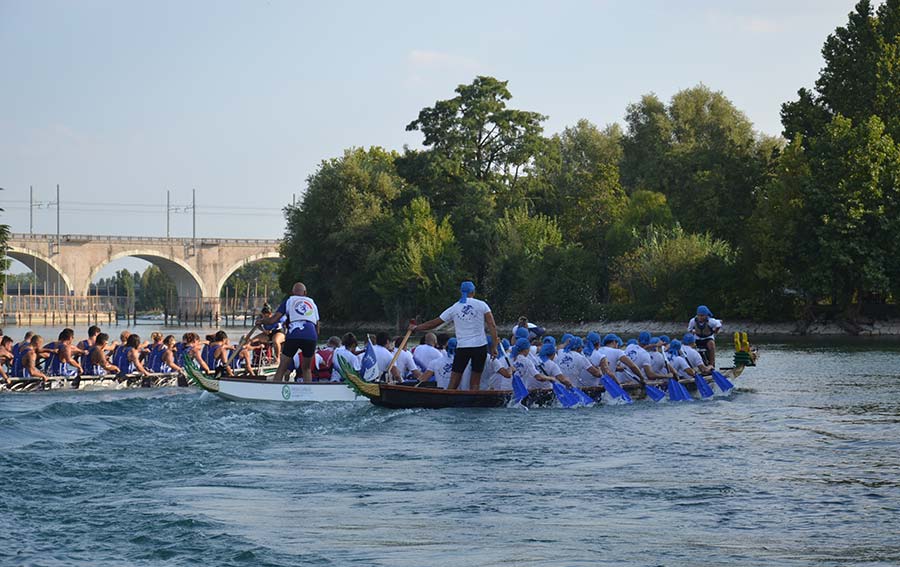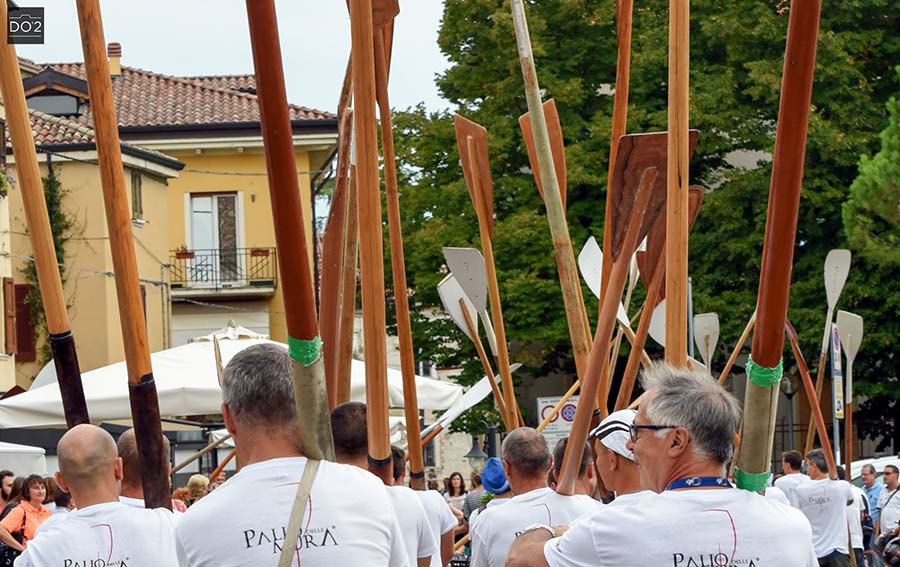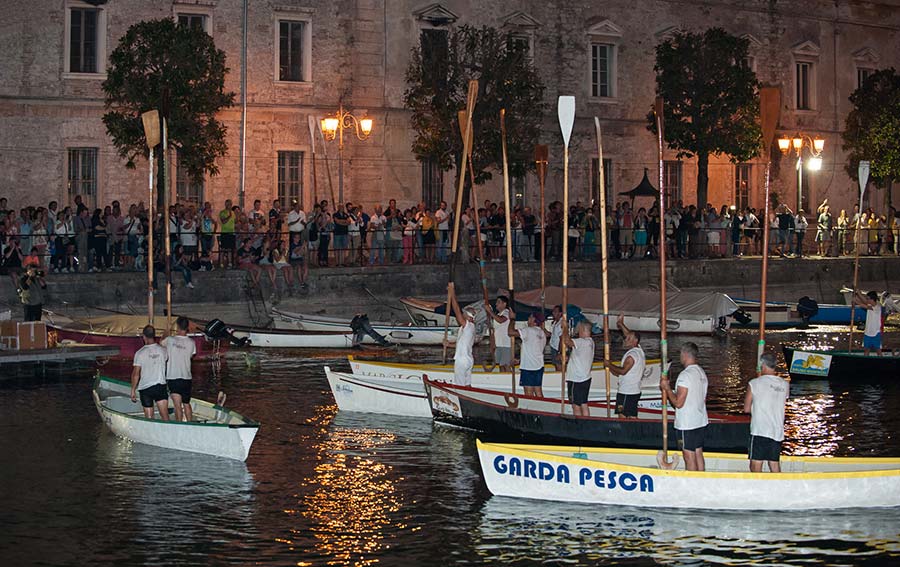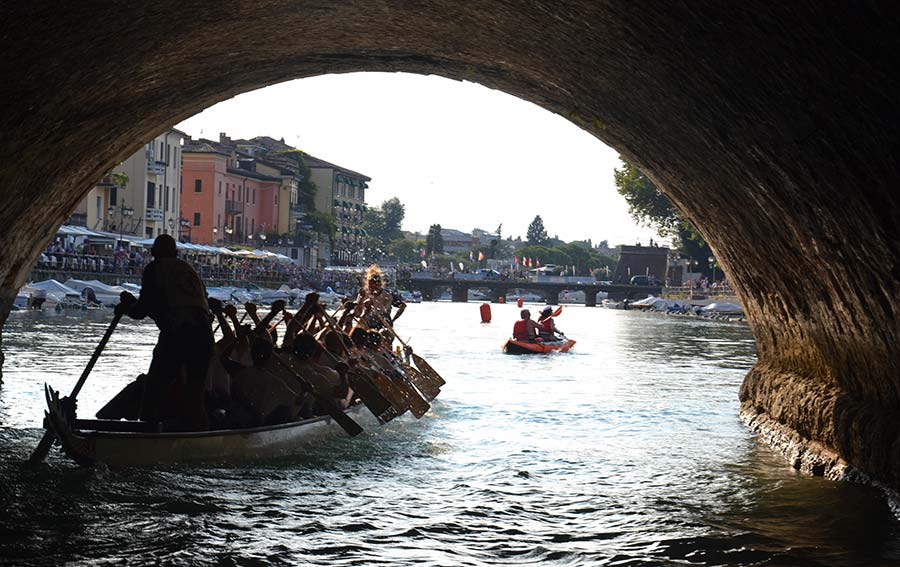ORIGINE DELLE GARE DI VOGA
Le imbarcazioni usate oggi per la gara sono rifacimenti di barche usate dai pescatori di un tempo; esse hanno subito solo qualche miglioria tecnica per essere rese più leggere e scorrevoli sull’acqua, ma sono rimaste uguali come struttura: con un fondo piatto e senza chiglia, i remi e le forcole in legno. Inoltre i pescatori remavano in piedi per vedere meglio dove andare e per riuscire a mettere le reti.
Questo tipo di imbarcazioni così come la remata sono originarie del Veneto, di Venezia in particolare, infatti era necessario avere delle imbarcazioni a fondo piatto e senza chiglia nella laguna per essere più agili nei canali e per non rimanere impigliati in acque troppo basse.
Si racconta che negli anni Trenta fosse abitudine dei pescatori del Lago di Garda organizzare gare di voga alla veneta in eventi simili a quello odierno.
ORIGINE DEL PALIO DELLE MURA
Nel 1969 grazie a Enza Lonardi e GianAntonio Fratucello nacque il Comitato Giovanile per stimolare i giovani alla partecipazione sociale. Durante il periodo estivo, in occasione della festa dell’ospite, il Comitato Giovanile organizzava grandi manifestazioni.
Grazie a questi giovani volenterosi nacque l’idea, nel 1992, di organizzare il primo “Palio delle Mura”, dove gli equipaggi, composti da due vogatori, si sfidavano tra le Mura di Peschiera del Garda.
Il nome “Palio” deriva dal fatto che si tratta di una gara tra entità territoriali vicine tra di loro ed il nome "palio" deriva per estensione dal latino pallium, che significa mantello e indica il drappo di stoffa consegnato in premio al vincitore della manifestazione. Il Palio è oggi tipicamente un dipinto, ed il primo fu disegnato dal famoso artista Milo Manara.
STORIA DELLE MURA DI PESCHIERA
Peschiera del Garda si presta in modo particolare allo svolgimento di questa spettacolare gara poichè, avvolta dalle acque del fiume Mincio come una piccola Venezia, è un’isola murata costruita su una rete di canali (che fanno parte della storica struttura difensiva della città fortificata). Così gli equipaggi si sfidanto in una gara di astuzia nel superamento degli ostacoli del percorso come i ponti più bassi, i canali più stretti e le curve più difficili.
Più volte l’assetto militare-urbanistico della città lacustre fu stravolto nel corso degli anni, venendone ridisegnata la forma, la disposizione degli edifici e dell’imponente cinta muraria che per secoli fu baluardo inespugnabile per i molti nemici che tentarono di conquistarla.
Nel Medioevo, Verona estese fino al lago la sua dominazione e Peschiera del Garda venne così a costituire un nodo strategico fondamentale per lo sbarramento del Mincio. Mastino della Scala iniziò l’opera di fortificazione del centro di Peschiera. Nel 1439 Peschiera del Garda entrò a far parte della Serenissima Repubblica di Venezia e, a partire dal 1549, la fortezza assunse l’attuale forma pentagonale. Tale conformazione muraria rimase inalterata fino a quando Peschiera divenne di dominio francese. Nel 1815 poi Peschiera cadde nelle mani degli austriaci e gli ingegnieri dell’esercito di occupazione si impegnarono al completamento delle opere di costruzione di forti esterni ed interni al centro storico iniziate dai francesi. Gli Austriaci si impegnarono anche nella soluzione dei problemi di carattere urbanistico ed edilizio all’interno del nucleo centrale con una nuova dotazione di attrezzature militari. Oggi il sistema di fortificazione di Peschiera è patrimonio dell’UNESCO.
